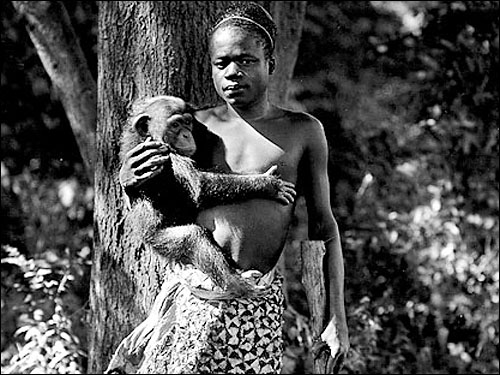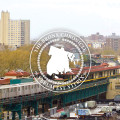“It’s over,” said New York City Mayor Bill de Blasio at a press conference last month.
Since before his inauguration, New York City Mayor Bill de Blasio has been a part of a scandal between animal rights groups and carriage horse drivers dubbed by some as “CarriageGate”. The sides appear to be black and white, those wanting to abolish the use of carriage horses and those wanting to keep carriage horses on the streets of New York. Both sides even have their own ‘villains’, usually it’s whoever is on the opposing side.
For those who are pro-carriage, their villain has had a name for a while now. He goes by Steve Nislick, chief executive officer of Edison Properties. Many of the carriage drivers and executives in the horse carriage industry have pointed to Steve Nislick as the force behind the ban. This was probably spurred by journalist Michael Gross in a 2009 article, which stated that Edison Properties “employs legions of lobbyists to influence city decisions on real estate and zoning in its favor”, and that two of the company’s businesses (Manhattan Mini-Storage and Edison ParkFast), “have multiple locations in the same Far West Midtown neighborhood as the stables where the Central Park horses are housed.” Michael Gross went on to claim that he received a brochure produced by Steve Nislick stating, “Currently, the stables consist of 64,000 square feet of valuable real estate on lots that could accomodate [sic] up to 150,000 square feet of development. These lots could be sold for new development.”
It also does not help matters that Steve Nislick is co-founder and President of New Yorkers for Clean, Livable and Safe Streets (NYCLASS), which according to Crain’s New York Business, spent $124,000 on anti-Quinn phone banking and gave a six-figure donation to “New York Is Not For Sale”. However, Steve Nislick stepped down as CEO in 2012 and is not employed by Edison Properties. Also, the brochure Michael Gross wrote about is noticeably absent not only on his website, but also from other internet sources.
Regardless of this, horse carriage drivers repeatedly express that if the ban does take place then they will lose not only their horses, but also their jobs. Proposed plans have stated that current drivers will be given employment by replacing horse carriages with vintage electric cars. The problem with this switch is that only drivers with a medallion are given that option, and they would have to purchase a new medallion for the electric car costing up to $175,000. It’s obvious that this exorbitant price would pose a major problem to the blue-collared carriage drivers.
It is not just the workers who are being vocal about this issue. Stable manager and driver Conor McHugh told Gothamist the following, “[De Blasio] never came to see our stable. He never did any research from our side. It’s strange. You would expect that someone who is the mayor would not just be influenced by some advocate.” Interestingly, similar legislation was brought up in 2007 to abolish carriage horses during Mayor Bill de Blasio’s time on City Council. However, he passed on signing it.
On the other spectrum are people who believe horse drawn carriages are unnecessary and inhumane; citing that horses on city streets constantly breathe in exhaust fumes and weave through dangerous traffic. While many horse carriage proponents claim that there have only been three horses to die in the past 30 years from traffic accidents, they neglect that there have been multiple deaths. Jackie, in 1999 was a horse that was electrocuted after stepping on a steel Con Edison service box cover. In 2006 there was Spotty and Juliet. Spotty was pinned under a car after colliding with it and later euthanized, and Juliet collapsed, and later died in Central Park, while her driver whipped her (saying that he was acting on his veterinarians orders). Smoothie, in 2007 died after he was startled and became stuck between two poles struggling to move forward. The last instance was in 2011 when carriage horse Charlie collapsed and died on the street from an untreated ulcer. Commenting on Charlie’s death was Dr. Pamela Corey, who works for the ASPCA. She stated that Charlie was most likely in pain at the time of his death and, “We are very concerned that Charlie was forced to work in spite of painful maladies”.
The death of horses is not the only issue plaguing the horse carriage industry. Accidents are also a serious threat, which can result in injuries to the horses, drivers, and pedestrians. In 1999 a hit-and-run driver crashed into the cab of a horse carriage, causing the driver of the carriage a broken jaw and causing the horse to bolt in the city streets, stopping only after a car ran into it. A horse named Bud suffered gashes to his right hind leg after being spooked. Bud collided with a taxi, which resulted in the taxi driver being admitted to the hospital. In the winter of 2011, three horses collapsed within six weeks. The first horse collapsed from exhaustion, the second after tripping over a carriage mechanism, and the third being Charlie. In June 2012, a horse collided with both an SUV and a motorcycle. The horse sustained gashes to its head, but no injuries to the driver or pedestrians were noted. One month later, a frightened horse broke free from its carriage, only to crash into a parked car; sending the two passengers and the driver to the hospital.
The drivers and the horse carriage industry itself have been accused of inhumane treatment, while drivers tout that the horses are vetted and state, “They got more rules and regulations now than they ever had.” Yet in the winter of 2011, horses were seen out during a weather emergency. The NYC Department of Health and Mental Hygiene (DOHMH) suspended carriage horses on January 23rd to the 27th, but 10 carriages were spotted in the park the morning of the 27th, effectively breaking the law. Only last September there was a horse named Chris who, after becoming spooked, flipped over his carriage and became entrapped underneath. Ironically, Chris’ driver, Frank Lou was charged the day before by the Department of Consumer Affairs for overcharging, and being previously charged with operating a carriage for more than 12 hours in a 20-hour period. Just a few weeks before Mayor Bill de Blasio made his intentions clear at the press conference last month, horse carriage driver, Saverio Colarusso, was arrested on December 20th for animal abuse charges. His horse, Blondie, was spotted struggling to pull it’s carriage, and when Mr. Colarusso was questioned, he admitted that Blondie was hurt for four days. This isn’t Mr. Colarusso’s first offense either, in 2010 he was charged with drinking while on duty, fined for driving his horse at unauthorized times, failure to keep a daily log and turning on carriage lights. After being examined by a police veterinarian, Blondie was found to have an infection in the hoof called thrush, which, if left untreated, can cause the horse to become lame resulting in euthanasia. It’s stated that thrush is the result from unclean conditions and improper care.
It is difficult to find information, studies, and statistics involving New York City’s horse carriage industry that does not come from a group with an agenda. One of the reasons for this is because the city has done a poor job at keeping up with animal welfare regulations, with the first audit of the carriage horse industry taking place in 2007. The audit was ordered by the city’s comptroller William C. Thompson Jr., with monitoring done by the Department of Health and Mental Hygiene and the Department of Consumer Affairs. Multiple serious issues were found, like lax veterinary care, horses being at risk of overheating on hot asphalt, not providing enough water, and horses being forced to stand in waste due to poor drainage. The biggest issue according to the audit was poor recording keeping, finding that 42% of health certificates for horses in 2005 and 2006 had conflicting physical characteristics including name, breed, age, color, and sex, but the same license numbers. While this is a case of poor record-keeping it also means that fifty-seven horses have been ‘switched’ with no way to track what happened (whether they were sold or have died) to the previous horses. However, the horse carriage industry is not alone in the blame as the audit found that inspections have been infrequent and that there has been ”no coordination between the department of health and the Department of Consumer Affairs,” said John Graham, deputy comptroller. Additionally, Mr. Thompson stated that, “The agencies entrusted with oversight here have dropped the ball.’
Here’s where things get tricky on this issue, in a follow-up report in 2009, seven out of the eleven recommendations from the audit were implemented. One of these being to create an advisory board, however, the issue of licensing horses was still not fixed.
Proposing a bill to abolish horse carriages should not be a black and white issue but it is made so by one-sided media reports and interest groups. Horses should be taken off of the streets of New York City, but not before a comprehensive employment plan for the drivers is laid out and placement is found for all the horses. The ASPCA has offered help in finding permanent homes for the horses, but they should act as mediators between the owners of the horses and rescuers. Also, the city and rescues groups need to take special care in ensuring that the horses do not end up being sold to slaughterhouses.

















Follow Us